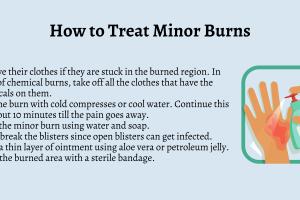Ultimate Guide to Treating Carpet Burns: Remedies and Prevention Tips

-
Quick Links:
- Understanding Carpet Burns
- Common Causes of Carpet Burns
- Immediate First Aid for Carpet Burns
- Effective Home Remedies
- When to Seek Professional Repair
- Preventing Future Carpet Burns
- Case Studies: Success Stories
- Expert Insights
- FAQs
Understanding Carpet Burns
Carpet burns occur when the fibers of the carpet are damaged, typically due to heat, friction, or chemical exposure. Understanding the nature of carpet burns is essential for effective treatment.
Carpet burns can range from slight discoloration to complete fiber destruction, depending on the severity of the incident. The materials used in carpets, such as nylon, polyester, or wool, can influence how they react to burns, making it crucial to identify the type of carpet before proceeding with treatment.
Common Causes of Carpet Burns
Several factors can lead to carpet burns:
- Hot Objects: Dropping a hot iron or placing a hot pan on the carpet can cause burns.
- Cigarettes: An extinguished cigarette that lands on the carpet may leave unsightly marks.
- Friction: Dragging heavy furniture can wear down the fibers, leading to burn-like damages.
- Chemicals: Spills of harsh chemicals can erode carpet fibers, creating burns.
Immediate First Aid for Carpet Burns
If you notice a burn on your carpet, acting quickly can prevent further damage. Here's a step-by-step guide:
- Assess the Damage: Determine the extent of the burn. Is it just surface damage, or are the fibers completely destroyed?
- Cool the Area: If the burn is recent, carefully cool the area with cold water or ice wrapped in a cloth to stop further damage.
- Trim Damaged Fibers: Use sharp scissors to trim frayed or burnt fibers, being careful not to cut surrounding areas.
- Clean the Area: Gently clean the area with a damp cloth to remove any debris or residue.
Effective Home Remedies
In many cases, home remedies can effectively treat minor carpet burns:
- Vinegar and Water Solution: Mix equal parts vinegar and water, apply the solution to the burn, and blot with a clean cloth.
- Baking Soda Paste: Create a paste with baking soda and water, apply it to the burn, allow it to dry, then vacuum it up.
- Carpet Repair Kits: For more serious burns, consider a carpet repair kit that can help you patch the area.
When to Seek Professional Repair
If the burn is extensive or deep, it may be best to consult a professional carpet cleaner or repair service. Professional services can provide:
- Expert Assessment: Professionals can accurately assess the damage and recommend the best course of action.
- Advanced Techniques: They have access to advanced cleaning and repair techniques that can restore your carpet.
- Guarantees: Many professional services offer guarantees on their work, providing peace of mind.
Preventing Future Carpet Burns
Prevention is the best approach to avoid carpet burns:
- Use Coasters and Mats: Place coasters under hot items and use rugs in high-traffic areas.
- Keep Cigarettes Away: Designate smoking areas away from carpets.
- Regular Maintenance: Vacuum and clean carpets regularly to keep them in good condition.
Case Studies: Success Stories
Here are a few examples of successful carpet burn treatments:
- Case Study 1: A homeowner used a vinegar solution on a small burn from a dropped iron, resulting in a nearly invisible recovery.
- Case Study 2: A family was able to effectively patch a burn caused by a cigarette with a professional repair kit, restoring their carpet's original look.
Expert Insights
We consulted with carpet care professionals to gather their insights on treating and preventing carpet burns:
"Understanding your carpet's material is key. Different materials react differently to burns, and knowing this can save you a lot of trouble." - Jane Doe, Carpet Care Specialist.
FAQs
1. Can I fix a carpet burn myself?
Yes, minor burns can be repaired using home remedies or carpet repair kits. However, extensive damage may require professional help.
2. What materials are most susceptible to burns?
Nylon and polyester carpets are generally more prone to burns than wool due to their synthetic nature.
3. How can I prevent carpet burns from candles?
Always place candles on stable surfaces and use candle holders to prevent dripping wax on carpets.
4. Is there a way to hide carpet burns?
Yes, strategic placement of furniture or decorative rugs can effectively hide minor burns.
5. How do I identify the type of carpet I have?
You can usually identify your carpet type by checking the label or consulting a professional.
6. Can carpet burns affect my health?
If the burn leads to mold or bacteria growth due to moisture, it can potentially affect health. Keeping the area clean is essential.
7. What should I do if I spill a chemical on my carpet?
Immediately remove any excess liquid, rinse with water, and blot with a clean cloth. If damage occurs, follow the appropriate treatment steps.
8. Are there specific products I should avoid on carpets?
Avoid harsh chemicals and cleaners that are not specifically formulated for carpets, as they can cause burns and discoloration.
9. How often should I clean my carpets to prevent burns?
Regular vacuuming is recommended at least once a week, with deep cleaning every 6-12 months.
10. What is the best home remedy for treating carpet burns?
A vinegar and water solution is often one of the most effective home remedies for treating minor carpet burns.
Random Reads
- Mastering whatsapp emojis guide
- Mastering whatsapp web guide
- Troubleshoot sound issues windows
- Troubleshooting microsoft authenticator app
- How to clean degrease laminate cabinets
- How to install phpmailer
- How to install printer without disk
- How to block search engines
- How to block pop ups on chrome
- How to block group texts on android